Announcing: Catalog #341 for April, 2024 – Rare & Early Newspapers…
March 29, 2024 by GuyHeilenman · Leave a Comment
|
|
[The links above will redirect to the latest catalog in approx. 30 days
upon which time it will update to the most recent catalog.]
Who’s Who in Newspapers? Pamela Sparhawk edition…
March 22, 2024 by GuyHeilenman · Leave a Comment
The 7th installment of Who’s Who in Newspapers:
Thanks to Swann Auction Galleries, we discovered another fascinating but unheralded name which appeared in three 1817 issues of the Columbian Centinel (see a photo of the notice below). Swann staff provided the following background:
Pamela Sparhawk was born circa 1761 in Africa, was captured as a young girl and brought to Boston in slavery and was granted her freedom during the American Revolution. She had been separated from her brother by her original owner, but miraculously reconnected with him in Boston, where he owned property and was living under the name Samuel Bean. When Samuel died in 1816, Pamela petitioned the court to be recognized as his heir. Her petition ran three times in the Columbian Centinel newspaper, telling the story of her life: “Pamela Sparhawk of Boston . . . is a native of Africa, and was brought from thence to the West-Indies by a slave trader . . . and was a slave in the family of Rev. Mr. Merriam, of Newton, until the American Revolution. . . Samuel Bean acknowledged her to be his sister and was satisfied of the fact, but it would be difficult if not impossible for her in a court of law to establish her claim . . . in consequence of the unhappy circumstance, which will be easily perceived.” The notices were signed in type with her mark, a sideways capital “X.” The statement was witnessed by Congressman Timothy Fuller (father of the important feminist author Margaret Fuller), but it apparently went unheeded by the General Court.
Pamela Sparhawk’s life has recently been reconstructed and celebrated by the Historic Newton organization in an online exhibition, “Finding Pamela: Writing a New History,” and was described in the Boston Globe on 30 June 2021.
The link to the auction (which at the time of this post was still in the future) is:
SWANN Auction #2663 – The petition of formerly enslaved woman Pamela Sparhawk
Thankfully we had an issue with this coverage as well, but the greatest gain was the research which Swann’s offering inspired. In less than 15 minutes we were able to locate *background information on Pamela which we found qui te interesting.
If you’re curiosity has been piqued to the point where you decide to discover more about her through the following link, please note the additional related information shown below the heading: “Who was Pamela Sparhawk?” Enjoy.
FINDING PAMELA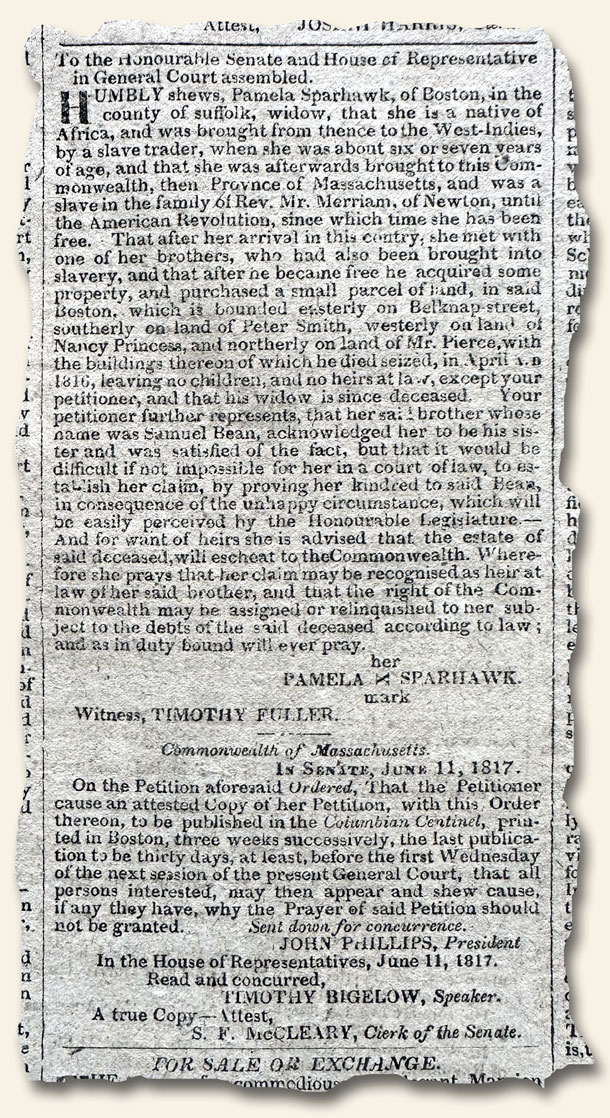
RareNewspapers.com has over 18,000 collectible newspapers available for under $50…
March 4, 2024 by GuyHeilenman · Leave a Comment
When it comes to authentic, collectibles from the past, it is hard to imagine that items 100-300 years old can be had for under $50, but it’s true. RareNewspapers.com has greater than 18,000 original newspapers priced under $50, of which well over 10,000 are 100-300+ years old. A chronological list can be found here:
Authentic/Collectible Newspapers Priced Under $50
The images below show a few snippets of what you may find.
The New York Draft riots from during the Civil War (1863)…
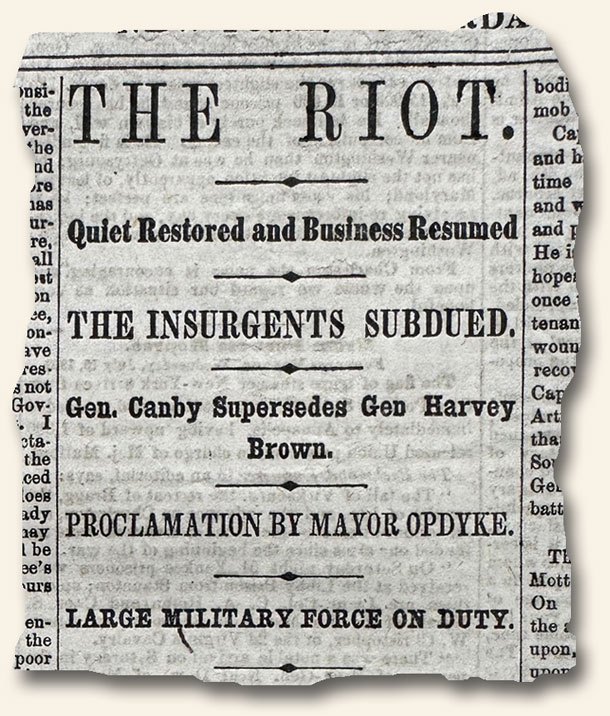
A newspaper from 1682 by a woman publisher…
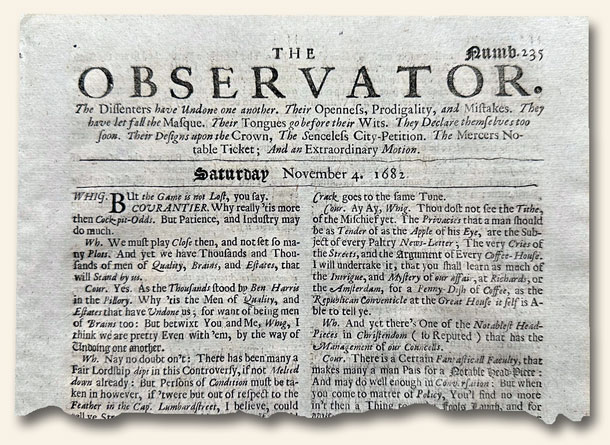
Peace between Israel and Palestine?

Beloved actor Henry Fonda’s death report in a regional Hollywood srea newspaper (Los Angeles Times)…

Announcing: Catalog #340 for March, 2024 – Rare & Early Newspapers…
March 1, 2024 by GuyHeilenman · Leave a Comment
|
|
[The links above will redirect to the latest catalog in approx. 30 days
upon which time it will update to the most recent catalog.]
They Put It In Print – The 12th President of The United States…
February 16, 2024 by GuyHeilenman · Leave a Comment
Who was the 12th president of The United States of America? Okay, perhaps your high school civics teacher didn’t require you to memorize their names in chronological order, but in case they did I’ll give you a little more time so you can run through them starting with Washington (hint, you’ll need more than both hands to count them out).
At this point I’m sure many have opted to simply do a quick internet search to “remember”. Cheating??? No judgement here. Do you have your answer?
Here goes…
So, did you come up with rolyat yrahcaz (the name is spelled backwards so your eyes wouldn’t easily notice it while reading the 1st two paragraphs)? However, NO! Sorry.
The one who was elected to be the 12th president refused to be inaugurated on the given day (March 4, 1849) since it was scheduled to be held on a Sunday. Being a “religious man”, he felt it improper to take the oath of office on the Christian Sabbath. Left with the unacceptable dilemma of having the top seat in the land left vacant, albeit for a short time, David Rice Atchison was sworn in to serve as “president for a day”. How do we know? The National Intelligencer for March 10, 1849 put it in print:
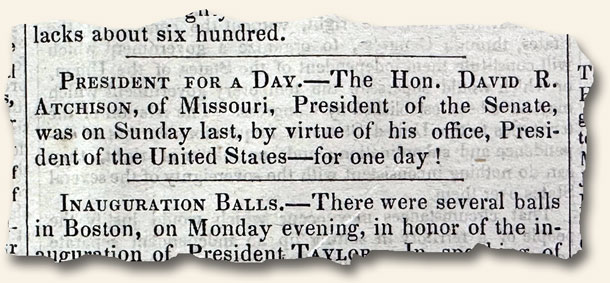
While the state of Missouri (Atchison’s home state) affirms this, the official website of the Senate of the United States says otherwise – and provides their reasoning.
Yet, who is right? I’m not a political scholar, but if accuracy of information provides a clue this same “official” article also says this rumor 1st appeared in the March 12th issue of the Alexandria Gazette… and we know for a fact this to be false. Again, how do we know? Our newly discovered issue is dated two days prior.
I love this collectible!
This Day in “News” History… January 26th…
January 26, 2024 by GuyHeilenman · Leave a Comment
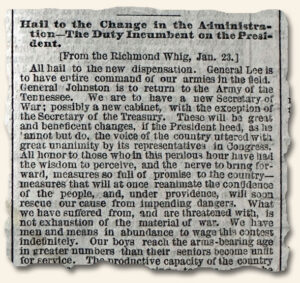 Another day of news as reported in original newspapers… January 26th…
Another day of news as reported in original newspapers… January 26th…
There are many internet sources available to explore what happened on a particular day in history. However, as collectors and resellers of “Rare & Early Newspapers”, our curiosity lies in what people were reading in their morning newspaper on specific days in history. In nearly every instance they were discovering what happened the day prior – and if one reaches back into the 1600s, 1700’s, and early 1800s, when news travelled a bit more slowly, they very well could have been (finally) reading about “rumored” and/or anticipated events from days, weeks, or even months prior.
Today’s adventure?
What about January 26th? The following link will take you to all of our available newspapers dated January 26th:
NEWS REPORTED in NEWSPAPERS on January 26th (through time)
Enjoy the trek. Oh, and if you want to try other dates, go here and plug in any month/day of interest.

Announcing: Catalog #336 for November, 2023 – Rare & Early Newspapers…
November 3, 2023 by GuyHeilenman · Leave a Comment
|
|
[The links above will redirect to the latest catalog in approx. 30 days
upon which time it will update to the most recent catalog.]
The reason I collected it: The John-Donkey – 1848…
October 30, 2023 by TimHughes · Leave a Comment
While historic events & people–whether they be tragic, heroic, or celebratory–are the domain for most collectors, venturing out of this arena into the small world of comic and satire magazines can be a refreshing change.
This title is a great example, and in my 47 years of collecting newspapers this is the only issue I have encountered. It lasted but 29 weekly issues in 1848. Its significance is such that Frank L. Mott, in his book “A History of American Magazines, 1741-1850”, devoted a chapter to this title.
A few comments from his book include: “…John-Donkey always maintained the tradition of his stupidity… he claimed only to be stupid and was continually trying to prove his stupidity…Most of John-Donkey’s articles, long and short, were satires upon contemporary events or fads, upon organizations, movements, and persons. Politics were prominent…The first page of each issue bore a series of pictures of John Donkey himself in various attitudes…Each number contained a political cartoon, full pate in size, and printed on an unbacked leaf [the print in this issue of ‘The Pennsylvania Thimble-Rigger’, blank on the reverse]… It is very probable that the seven libel suits filed against the John-Donkey in May had something to do with its demise…”. The photos below is of the issue dated March 11, 1848 – the one I collected.

Who will be the Superpowers of the 22nd century?
October 9, 2023 by GuyHeilenman · Leave a Comment
While Great Kingdoms come and Great Kingdoms go, no one can argue that The British Empire owned the title of Superpower for much of the 1600’s through 1800’s. This is not to disparage Spain, Prussia, France, Russia, Portugal and the entire Asian and African regions, but during this stretch of time, England/Britain had staying power to go with their strength. However, as the writing on the wall began to identify potential challengers to their title, it is interesting to hear who Lord Stanley, the notable British Prime Minister in 1858, had to say would be the major powers of the 20th century. An article with his thoughts which would prove to be prophetic in less than 100 years appeared in the March 22, 1858 issue of The New York Times. I wonder who will be the global force(s) 100 years from today? Bonus question: Will their dominance reach into the heavens… or to the depths of the sea?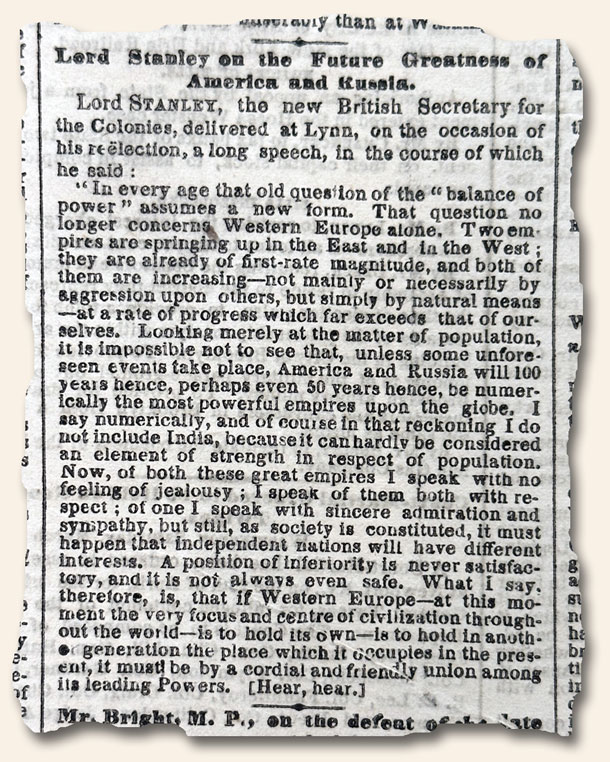
Announcing: Catalog #335 for October, 2023 – Rare & Early Newspapers…
September 29, 2023 by GuyHeilenman · Leave a Comment
|
|
[The links above will redirect to the latest catalog in approx. 30 days
upon which time it will update to the most recent catalog.]



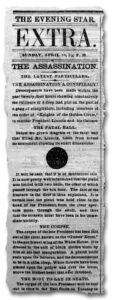 The April catalog (#341) is now available. Shown below are links to various segments of the catalog, our currently discounted
The April catalog (#341) is now available. Shown below are links to various segments of the catalog, our currently discounted 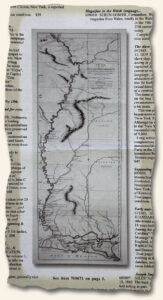 The March catalog (#340) is now available. Shown below are links to various segments of the catalog, our currently discounted
The March catalog (#340) is now available. Shown below are links to various segments of the catalog, our currently discounted 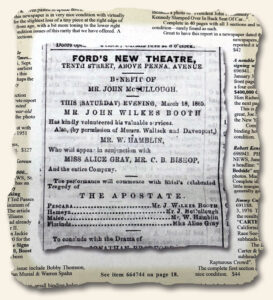 CATALOG #336
CATALOG #336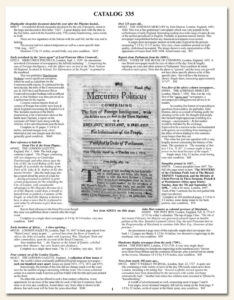 The October catalog (#335) is now available. Shown below are links to various segments of the catalog, our currently discounted
The October catalog (#335) is now available. Shown below are links to various segments of the catalog, our currently discounted